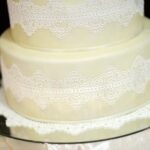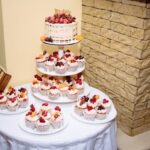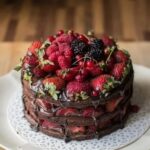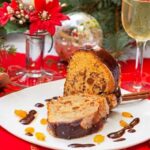Welcome to the Ultimate Guide on How to Decorate an Easter Cake. Easter is a time of celebration and joy, and what better way to indulge in the festivities than with a beautifully decorated cake? In this blog post, we will delve into the art of Easter cake decoration, exploring different techniques, design ideas, and tips to create a show-stopping centerpiece for your holiday table.
Easter holds special significance for many people around the world. It symbolizes new beginnings, rebirth, and the arrival of spring. One popular tradition associated with this holiday is decorating eggs, which dates back centuries. As cakes became more elaborate and intricate over time, it was only natural for cake decoration to become an integral part of Easter celebrations as well. Decorating an Easter cake allows you to express your creativity while embracing the spirit of the season.
Before we dive into the specifics of cake decoration, let’s start by choosing the perfect base for your Easter cake. From light and fluffy sponge cakes to rich and decadent chocolate cakes, there are endless options to suit every taste bud. We will explore various flavors and textures that complement the theme of Easter while also providing options for those with specific dietary preferences like vegan or gluten-free.
So get ready to embark on a journey filled with inspiration, step-by-step instructions, and valuable tips on how to decorate an Easter cake that will leave everyone amazed. Let’s unleash our creativity and make this year’s Easter celebration truly unforgettable through the artistry of cake decoration.
Choosing the Perfect Easter Cake Base
When it comes to decorating an Easter cake, one of the most important decisions you’ll make is choosing the perfect cake base. The cake itself sets the foundation for your decoration and can greatly enhance the overall theme and flavors of your creation. Here are some tips to help you choose the ideal Easter cake base:
- Explore different types of cakes suitable for Easter: There are plenty of options when it comes to choosing a cake type for Easter. You may opt for a classic vanilla or chocolate cake, which are always crowd-pleasers. Alternatively, consider more festive options like carrot cake or lemon-blueberry cake that complement the bright and fresh vibes of Easter.
- Discuss flavors and textures that complement the theme: Think about what flavors and textures evoke the essence of Easter. Light and fruity flavors like citrus or berry can mimic the freshness of springtime. Consider incorporating elements like coconut flakes or almond extract to add a seasonal twist.
- Include options for different dietary preferences: It’s essential to accommodate various dietary preferences when choosing an Easter cake base. You may provide recipes or suggestions for vegan, gluten-free, or dairy-free alternatives so everyone can enjoy a delicious treat during this festive season.
Remember, the key is to select a cake base that not only tastes amazing but also complements your chosen decoration theme. Use this opportunity to get creative with flavors that reflect the joyous spirit of Easter.
Once you’ve decided on your perfect cake base, it’s time to move on to gathering all the essential tools and ingredients needed for decorating your Easter masterpiece.
Stay tuned for our next section where we will discuss in detail all the tools required as well as highlight some important ingredients commonly used for creating beautiful Easter-themed cakes.
Essential Tools and Ingredients for Easter Cake Decoration
Tools Needed for Cake Decoration
When it comes to decorating an Easter cake, having the proper tools is essential. Here are some of the key tools you’ll need for successful cake decoration:
- Offset Spatula: This tool is perfect for spreading frosting and achieving smooth finishes on your cake.
- Piping Bags and Tips: These allow you to create beautiful designs with icing or buttercream. Experiment with different tips to achieve various textures and patterns.
- Palette Knife or Bench Scraper: These tools are useful for creating clean edges and smoothing out frosting.
- Decorating Comb: A decorating comb can be used to create texture or patterns in your frosting.
The Importance of Quality Ingredients
In addition to tools, using high-quality ingredients plays a crucial role in achieving a delicious and visually appealing Easter cake. Be sure to use fresh eggs, pure vanilla extract, and high-quality flour for the best results.
Ingredients commonly used for Easter-themed cakes
To add an Easter twist to your cake, consider incorporating these ingredients:
- Lemon or Citrus Zest: Adding lemon zest or other citrus flavors can give your cake a fresh and vibrant taste that complements the spring season.
- Pastel Food Coloring: Use pastel shades of food coloring to create a festive color palette for your decorations.
- Edible Flowers: Incorporate edible flowers such as pansies or violets on your cake as a beautiful and natural decoration.
- Chocolate Eggs or Bunny-shaped Candies: Use chocolate eggs or bunny-shaped candies as additional decorations that add both flavor and visual appeal.
Remember, using quality tools and ingredients will elevate your Easter cake decoration skills and help you create a stunning centerpiece for your celebration.
Preparing and Leveling the Cake Layers
Step-by-Step Instructions for Baking and Preparing the Cake Layers
To begin decorating your Easter cake, you first need to bake the cake layers. Follow these step-by-step instructions for a successful baking experience:
- Preheat the oven: Start by preheating your oven to the recommended temperature in the cake recipe. This ensures that your cakes will bake evenly.
- Prepare the pans: Grease and flour your cake pans or line them with parchment paper to prevent sticking.
- Make the batter: Gather all the ingredients needed for the cake batter according to your chosen recipe. Follow the instructions carefully, mixing ingredients together until smooth and well-combined.
- Divide and pour the batter: Divide the cake batter equally between your prepared pans. Use a spatula or spoon to spread it evenly across the bottom of each pan.
- Bake in preheated oven: Place your pans in the preheated oven and set a timer according to your recipe’s recommended baking time. Avoid opening the oven door frequently as it can cause uneven baking or deflating of your cakes.
- Test for doneness: To check if your cakes are fully baked, insert a toothpick into their centers. If it comes out clean or with just a few crumbs attached, they are done.
- Cool and remove from pans: Once baked, allow your cakes to cool in their pans on wire racks for about 10-15 minutes before gently removing them from the pans to cool completely.
Tips for Achieving Even Layers and Avoiding Domes
Achieving perfectly even cake layers is essential for beautifully decorated Easter cakes. Here are some tips to help you level your layers:
- Trim off domed tops: After allowing your cakes to cool completely, use a serrated knife or cake leveler to trim off any domed tops gently. This will create a flat surface for assembling your cake layers.
- Use a leveler or toothpicks: To ensure that layers have the same height throughout, you can use a cake leveler or insert toothpicks into the sides of the cakes as guides. Trim any excess if necessary for an even result.
- Flip and stack: To assemble your layers, flip one cake layer upside down so that its flat bottom becomes the top surface of your cake. This creates a smooth foundation for frosting and decorating.
- Crumb coat for stability: Applying a thin layer of frosting called a crumb coat can help stabilize the layers and prevent crumbs from mixing with your final frosting layer.
Maintaining Moist and Fluffy Cake Texture
A moist and fluffy texture is key to a delicious Easter cake. Here are some special techniques to maintain moisture and achieve a light and airy cake:
- Don’t overmix: Be mindful not to overmix the batter as this can result in dense cakes. Mix until just combined to avoid developing excess gluten.
- Use buttermilk or sour cream: Substitute part of the liquid in your recipe with buttermilk or sour cream to add moisture and tenderness to the cake.
- Add pudding mix or mayo: For an extra moist texture, you can incorporate instant pudding mix (matching the flavor of your cake) into the batter or use mayonnaise instead of oil.
By following these tips, you’ll be well on your way to achieving perfectly baked and prepared cake layers for your Easter creation.
Crumb Coating and Frosting Techniques
Crumb coating is an essential step in cake decorating that ensures a smooth and professional-looking final result. This technique involves applying a thin layer of frosting to the cake to trap any loose crumbs before adding the final layer of frosting. Here are the steps to achieve a perfect crumb coat:
- Start with cooled and leveled cake layers: Before you begin crumb coating, make sure your cake layers have completely cooled and been leveled if necessary. Uneven or domed cakes can make it difficult to achieve a smooth finish.
- Apply a thin layer of frosting: Using an offset spatula, apply a thin layer of frosting on top of the first cake layer. Spread it evenly all the way to the edges, making sure to cover any gaps between layers.
- Smooth out the surface: Once you have applied the thin layer of frosting, use a bench scraper or an offset spatula to smooth out the surface of the cake. Hold the scraper or spatula at a 45-degree angle and rotate the turntable, gradually scraping off excess frosting and creating a level surface.
- Chill the cake: After you have crumb coated the first layer, refrigerate or freeze the cake for about 15 minutes until this thin layer of frosting firms up. This will help prevent any loose crumbs from mixing into your final layer of frosting.
After successfully crumb coating your Easter cake, it’s time for applying the final layer of frosting. Here are some popular options for Easter cake frostings:
- Buttercream Frosting: Buttercream is a classic choice for Easter cakes due to its versatility and ability to hold different designs well. It can be easily colored using gel food coloring, allowing you to create vibrant spring-inspired hues.
- Cream Cheese Frosting: Cream cheese frosting adds a tangy flavor that pairs well with fruity flavors like carrot or lemon cakes, which are popular options during Easter festivities.
- Fondant: Fondant is a smooth and pliable icing that can be rolled out and draped over the cake for a flawless finish. It gives your cake a polished look and allows for intricate designs to be added.
Remember, when applying the final layer of frosting, take your time and ensure an even coating around the entire cake. Smooth out any imperfections using an offset spatula or bench scraper, and feel free to get creative with piping or adding decorative elements on top of your frosting. The goal is to achieve a beautifully finished Easter cake that will impress your guests.
With these crumb coating and frosting techniques, you’ll be well on your way to creating a stunning Easter cake that looks as good as it tastes.
Easter Cake Design Ideas and Themes
When it comes to decorating an Easter cake, the design and theme play a crucial role in capturing the festive spirit. Whether you prefer traditional motifs or want to try something more modern, there are endless possibilities for creating a stunning Easter cake. Here are some ideas and themes to inspire your creative endeavors:
- Traditional Easter Motifs: Incorporating classic Easter symbols like bunnies, eggs, flowers, or chicks can instantly bring a festive vibe to your cake. Consider using fondant or icing to create adorable bunny figures, delicate flower petals, or intricately designed Easter eggs. These traditional motifs not only add visual appeal but also represent the essence of Easter celebrations.
- Spring Landscapes: Celebrate the arrival of spring by designing your cake around vibrant spring landscapes. Capture the beauty of blooming flowers, lush green grass, and colorful butterflies using edible flowers or fondant cutouts. This theme is perfect for those who want to showcase the freshness and renewal that comes with this season.
- Pastel Color Palettes: Choose pastel shades like baby blue, soft pink, mint green, lavender, or pale yellow for your cake’s color palette to evoke feelings of joy and new beginnings. These gentle hues work exceptionally well with any design idea you choose, providing a sense of elegance and charm.
- Modern Minimalistic Designs: For a contemporary twist on Easter cake decoration, opt for minimalistic designs that focus on clean lines and simplicity. Incorporate geometric shapes or abstract patterns in bold colors to create a sleek and sophisticated look.
Whatever design or theme you choose for your Easter cake, remember to have fun with it. Get creative and experiment with different techniques and decorations to make your cake truly unique.
| Idea/Theme | Description |
|---|---|
| Traditional Easter Motifs | Incorporate classic Easter symbols like bunnies, eggs, flowers, or chicks. Use fondant or icing to create adorable bunny figures, delicate flower petals. |
| Spring Landscapes | Capture the beauty of blooming flowers, lush green grass, and colorful butterflies using edible flowers or fondant cutouts. |
| Pastel Color Palettes | Choose pastel shades like baby blue, soft pink, mint green, lavender, or pale yellow for your cake’s color palette to evoke feelings of joy and new beginnings. |
| Modern Minimalistic Designs | Opt for minimalistic designs that focus on clean lines and simplicity. Incorporate geometric shapes or abstract patterns in bold colors to create a sleek and sophisticated look. |
Advanced Decorating Techniques and Tips
Once you have mastered the basics of cake decoration, it’s time to take your skills to the next level with some advanced techniques. Piping, fondant modeling, and painting are just a few examples of the exciting techniques you can explore to create stunning Easter cakes. In this section, we will guide you through step-by-step instructions for each technique and offer troubleshooting advice for commonly encountered problems.
Piping is a versatile technique that allows you to add intricate designs and details to your Easter cake. One popular piping technique is creating rosettes or flowers using a piping bag fitted with a petal tip. Start by squeezing the bag gently while applying pressure evenly to create a small base, then gradually move outward in a circular motion to form petals. Practice on parchment paper before piping directly onto the cake to get comfortable with the technique.
Fondant modeling opens up endless possibilities for creating three-dimensional decorations for your Easter cake. You can sculpt adorable bunnies, colorful eggs, or delicate flowers using edible fondant or gum paste. Start with small amounts of fondant and gradually add color as needed, kneading until it reaches a pliable consistency. Use sculpting tools and molds if necessary to achieve more intricate details.
For those who want to elevate their cake design even further, painting can be an excellent option. Edible paints or food coloring mixed with clear alcohol can be used to paint intricate patterns or landscapes onto your frosted cake. Use fine brushes and practice on a palette or spare piece of fondant before applying the paint directly onto the cake.
Remember that advanced techniques may require patience and practice. Don’t be discouraged if your first attempts do not turn out perfectly – even professional decorators go through trial and error processes. Experiment with different designs, colors, and textures until you find what works best for your vision.
In the next section, we will explore how to add the finishing touches to your Easter cake, including edible decorations and non-edible accents that will make your creation stand out.
Adding the Finishing Touches
Once you have completed the main decoration of your Easter cake, it’s time to add those final touches that will bring your creation to life. These finishing touches can truly make your cake stand out and complement the overall design. In this section, we will discuss a variety of ideas for adding edible decorations as well as non-edible embellishments that will enhance the visual appeal of your Easter cake.
When it comes to edible decorations, there are endless possibilities. Sprinkles and colored sugars can be used to add texture and sparkle to your cake. Consider using pastel colors or spring-themed shapes such as flowers, bunnies, or eggs for a festive touch. Edible blossoms like violets or pansies can be delicately placed on top of the cake for an elegant look.
Candies are another popular choice for decorating Easter cakes. Embellish your cake with chocolate eggs, jelly beans, or marshmallow peeps in various colors and sizes. Arrange them strategically around the cake or create a border along the edges for a playful and eye-catching effect.
In addition to edible decorations, you can also consider non-edible embellishments to further enhance the presentation of your Easter cake. Cake toppers in the shape of chicks, rabbits, or even mini Easter baskets can be placed on top of the cake as a focal point. Ribbons or bows tied around the base of the cake can add an extra element of elegance.
Remember that presentation is key when it comes to decorating an Easter cake. Consider placing your finished creation on a decorative cake stand or platter to elevate its aesthetic appeal. You may also want to garnish the serving plate with fresh flowers or greenery for a touch of natural beauty.
| Edible Decorations | Non-edible Embellishments |
|---|---|
| Sprinkles and colored sugars | Cake toppers in the shape of chicks, rabbits, or Easter baskets |
| Edible blossoms such as violets or pansies | Ribbons or bows tied around the base of the cake |
| Chocolate eggs, jelly beans, or marshmallow peeps | Fresh flowers or greenery to garnish the serving plate |
Remember to have fun with your finishing touches and let your creativity shine through. The small details can make a big difference in transforming your Easter cake into a stunning centerpiece that will impress both visually and in taste.
Final Thoughts and Conclusion
In conclusion, decorating an Easter cake can be a fun and creative way to celebrate the holiday and showcase your baking skills. Throughout this ultimate guide, we have explored various aspects of decorating an Easter cake, from choosing the perfect base to advanced techniques and finishing touches.
One key takeaway from this guide is the importance of selecting the right cake base that complements the Easter theme. Whether you prefer a traditional vanilla sponge or a decadent chocolate cake, there are options available for different dietary preferences as well. Experimenting with different flavors and textures can add depth and excitement to your Easter cakes.
Additionally, we have discussed essential tools and ingredients for cake decoration, emphasizing the use of quality ingredients to achieve the best results. Preparing and leveling your cake layers properly is crucial for a visually appealing result, while crumb coating and frosting techniques ensure a smooth finish. The design ideas and themes presented in this guide provide inspiration for creating stunning Easter cakes that capture the spirit of the holiday.
Finally, we encourage you to have fun with your Easter cake decorations. Let your creativity flow and experiment with advanced techniques like piping or fondant modeling. And remember, adding finishing touches such as edible decorations or complimentary non-edible decorations can elevate your cake’s presentation. Share your creations with us, ask questions, and most importantly, enjoy the process of decorating an Easter cake that will bring joy to you and those around you during this festive season. Happy decorating.
Frequently Asked Questions
How to decorate an Easter cake easy?
Decorating an Easter cake can be made easy by utilizing simple techniques and decorations. Start by baking a basic cake in your preferred flavor, such as vanilla or chocolate. Once the cake has cooled, frost it with a layer of buttercream or whipped cream icing, depending on your preference.
To give it an Easter theme, consider adding pastel-colored sprinkles or mini chocolate eggs around the perimeter of the cake. Another option is to create a design using colorful piped icing, such as flowers or bunnies. These simple yet festive decorations will make your Easter cake look delightful without requiring extensive artistic skills or complicated steps.
How to decorate a cake with Easter eggs?
When decorating a cake with Easter eggs, there are numerous ways to incorporate this festive element into the design. One approach is to scatter chocolate or candy eggs across the top of the cake, allowing them to slightly sink into the frosting for stability. Alternatively, you can arrange larger Easter eggs around the sides of the cake by pressing them gently into the frosting while ensuring they stay securely in place.
For a more elaborate option, consider creating edible icing Easter eggs using molds and food coloring. These can be placed strategically on top of the cake or cascading down its sides for an eye-catching display that enhances the overall festive look.
How do you decorate a cake in a simple way?
Achieving a simply decorated cake involves concentrating on clean lines and minimalistic designs that still exude charm and appeal. One way to achieve this is by using a smooth layer of frosting over the entire cake surface; this can be accomplished with buttercream, ganache, or fondant icing that provides a flawless finish. To keep it simple yet elegant, opt for a single color palette for both the cake and decoration—pastel shades work particularly well for various occasions including birthdays and weddings.
A classic touch could involve piping an evenly spaced border around the edges of each cake layer using matching frosting colors —try delicate rosettes or small dots for a subtle effect. Adding a few fresh flowers or berries as a topper can elevate the cake’s simplicity while maintaining a sleek appearance. Overall, focusing on clean lines, minimal embellishments, and a cohesive color scheme will create an effortlessly beautiful cake that is visually pleasing without being overly complex.

Welcome to my blog about home and family. This blog is a place where I will share my thoughts, ideas, and experiences related to these important topics. I am a stay-at-home mom with two young children. I hope you enjoy reading it! and may find some helpful tips and ideas that will make your home and family life even better!





